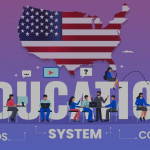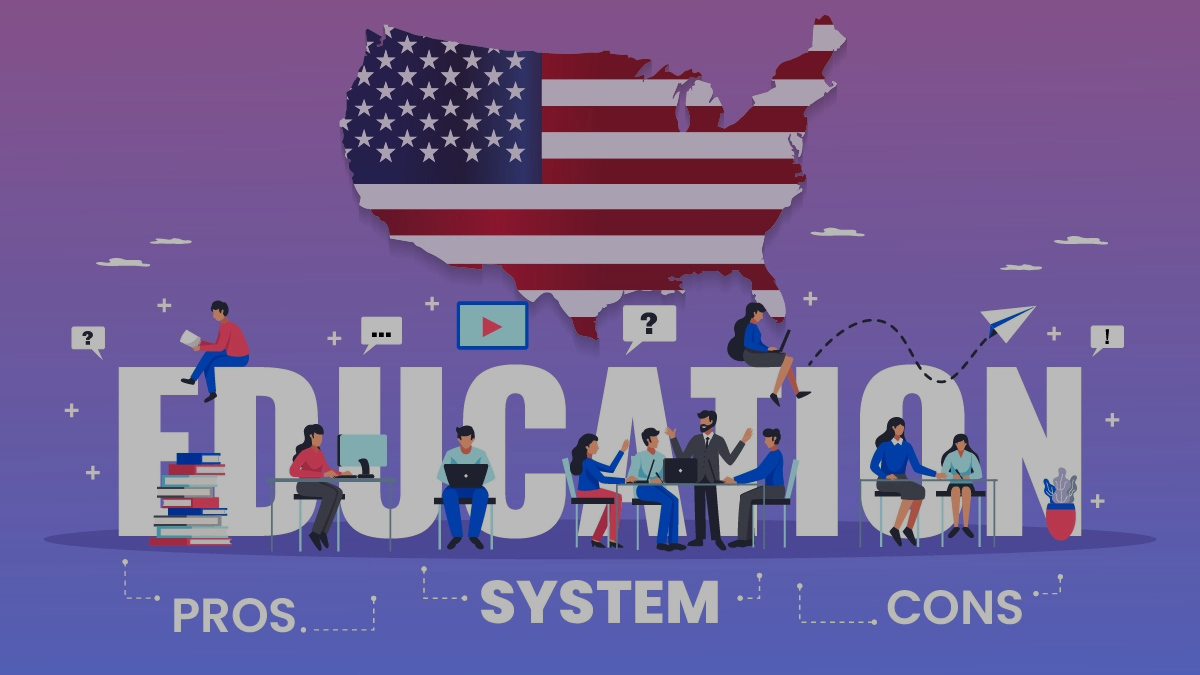The education system in the United States is one of the most diverse and decentralized systems in the world. It is structured to provide free and equitable access to education for all citizens and residents, but also offers a wide range of choices in terms of curriculum, schooling types, and higher education institutions. This article presents a detailed overview of how the education system in the U.S. is organized, from early childhood to higher education.
1. Structure of the U.S. Education System
The U.S. education system is generally divided into the following stages:
a. Early Childhood Education (Preschool/Pre-K)
-
Age: 3–5 years
-
Focuses on basic motor skills, socialization, and early learning concepts (colors, letters, numbers).
-
Optional but highly encouraged to prepare children for formal schooling.
b. Elementary School
-
Grades: Kindergarten (K) through 5th Grade
-
Age: 5–11 years
-
Core subjects include English, math, science, social studies, and physical education.
c. Middle School (Junior High School)
-
Grades: 6th to 8th
-
Age: 11–14 years
-
Students begin to take more varied subjects, including electives like music, art, and technology.
d. High School
-
Grades: 9th to 12th (Freshman to Senior year)
-
Age: 14–18 years
-
Curriculum includes core subjects (English, math, science, social studies) and elective courses.
-
Students must pass standardized tests and earn a set number of credits to graduate with a high school diploma.
2. Higher Education in the U.S.
a. Community Colleges
-
Offer two-year associate degrees.
-
More affordable and often serve as a stepping stone to four-year universities.
b. Colleges and Universities
-
Offer bachelor’s (4 years), master’s (2 years), and doctoral (3–7 years) degrees.
-
Known for academic freedom, flexibility in course selection, and diverse programs.
-
Prestigious institutions include Harvard, MIT, Stanford, and Yale.
c. Vocational and Technical Schools
-
Provide practical and job-specific training (e.g., nursing, welding, IT).
-
Programs typically last from a few months to two years.
3. Public vs. Private Education
Public Schools
-
Funded by federal, state, and local governments.
-
Tuition-free for residents.
-
Account for about 90% of K–12 student enrollment.
Private Schools
-
Funded by tuition, donations, and religious or private organizations.
-
Often have smaller class sizes and may offer specialized curricula (e.g., Montessori, religious education).
Charter Schools
-
Publicly funded but independently run.
-
Have more flexibility in teaching methods and curriculum.
4. Curriculum and Standards
-
Common Core Standards are followed by many states, focusing on English and mathematics.
-
Curriculum decisions are made at the state and local level, giving school districts significant autonomy.
-
Advanced Placement (AP) and International Baccalaureate (IB) programs offer college-level courses in high school.
5. Grading System
The most common grading scale is:
| Grade | Description | GPA Equivalent |
|---|---|---|
| A | Excellent | 4.0 |
| B | Good | 3.0 |
| C | Average | 2.0 |
| D | Below Avg. | 1.0 |
| F | Failing | 0.0 |
6. Special Education and Inclusivity
-
U.S. law requires that students with disabilities have access to a Free Appropriate Public Education (FAPE).
-
Individualized Education Programs (IEPs) are developed for students with special needs.
-
Schools must ensure accessibility and provide necessary accommodations.
7. Standardized Testing
-
SAT and ACT are commonly used for college admissions.
-
TOEFL and IELTS are required for international students to prove English proficiency.
-
K–12 students often take state-mandated tests to assess educational progress.
8. Funding and Governance
-
Education is primarily funded and managed at the state and local level.
-
The U.S. Department of Education oversees national education policy and distributes federal funding.
-
Local school boards make key decisions about curriculum, budget, and staff.
9. Challenges in the U.S. Education System
-
Inequality in funding between wealthy and underfunded districts.
-
Student loan debt in higher education is a growing concern.
-
Achievement gaps based on race, socioeconomic status, and geography.
-
Ongoing debates over curriculum content (e.g., history, science, and sex education).
10. Strengths and Innovations
-
Diverse options for education pathways and career readiness.
-
Strong focus on critical thinking and creativity.
-
World-renowned research universities and innovation hubs.
-
Integration of technology and digital learning.
Conclusion
The U.S. education system offers vast opportunities and choices for learners at every stage of life. While it faces challenges, especially related to equity and affordability, it continues to evolve through innovation, inclusivity, and a strong emphasis on personal and academic development. Understanding its structure and features is key for students, parents, educators, and policymakers alike.












